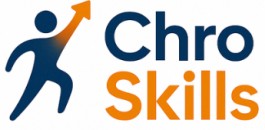
Understanding the Core HR Training Process Problems
Identifying Key Roadblocks in HR Training
In the ever-evolving landscape of human resource management, understanding the foundational issues of HR training is paramount. Companies continuously face challenges that impact employee training and development, which in turn affects overall performance and compliance. By addressing these core problems, HR leaders can enhance employee experience and drive organizational success.
One major obstacle in HR training processes is ineffective onboarding. Poorly executed onboarding processes can lead to confusion, low employee engagement, and even increased turnover. To combat this, investing time in creating a structured onboarding process with clear guidelines and time-bound objectives is crucial. It lays the groundwork for a positive employee journey and aligns new employees with company culture right from the start.
Another critical challenge is the lack of consistent training development. Many organizations struggle to implement best practices in continuous learning and professional development, leading to skill gaps in their workforce. Chief human resource officers must champion ongoing education and create pathways for leadership development, ensuring employees have access to the best training resources and tools.
Additionally, companies often face hurdles in managing mental health education and conflict resolution in their training programs. Incorporating these elements into HR training can significantly elevate the employee experience, fostering a supportive work environment and enhancing performance management efforts.
Lastly, leveraging the right management software is essential to streamline HR processes. Such tools can significantly aid in performance tracking, resource management, and compliance tasks, providing a solid foundation for effective training strategies. With the right systems in place, organizations can seamlessly integrate learning opportunities into daily operations, strengthening their overall training framework.
Essential Skills for Chief Human Resources Officers
Mastering the Art of Human Resources Leadership
For a Chief Human Resources Officer (CHRO), possessing a well-rounded skill set is crucial to successfully navigating the complexities of the human resources landscape. One of the fundamental aspects of this role is the ability to manage diverse HR challenges that encompass various elements from training and employee development to leadership and strategic planning. Leadership and Strategic Vision A CHRO must showcase exceptional leadership skills, steering the human resources department and aligning strategic objectives with the company's overall goals. This includes fostering a company culture that encourages continuous learning, employee engagement, and performance management. By setting a strategic direction, CHROs enhance the onboarding process and ensure the smooth integration of top talent within the organization. Conflict Resolution and Communication Effective conflict resolution is a cornerstone of HR management. CHROs must be adept at mediating disputes and fostering dialogue between employees and management. Clear communication and negotiation skills are indispensable in resolving conflicts and maintaining a harmonious work environment. Technological Proficiency In today’s tech-driven world, leveraging management software is essential for efficient resource management and tracking employee performance. A proficient CHRO must navigate various tools to streamline HR processes such as onboarding, training development, and compliance tracking efficiently. This technological integration supports better employee training and enhances the overall employee experience. Commitment to Training and Development Training and development are critical for employee professional growth and retention. A CHRO must implement best practices in training programs, focusing on leadership development and upskilling. This effort not only improves workforce performance but also aids in managing mental health challenges and enhancing overall well-being. For more insights on essential skills for CHROs, explore the essential skills for chief human resources officers required to excel in this evolving field.Strategic Planning for Effective HR Training
Planning and Implementing HR Training Strategies
Developing strategic plans for HR training is crucial for the successful onboarding and ongoing development of employees within a company. The complexities of training can range from addressing unique employee needs to meeting organizational goals, making strategic planning a priority for any human resources department. To design and implement effective HR training strategies, chief human resources officers (CHROs) have to consider several key elements:- Employee Training Needs Assessment: Understanding both the short-term and long-term training needs of employees is imperative. This involves evaluating employee skill gaps, aligning them with company objectives, and prioritizing areas that require immediate attention.
- Integration of Best Practices: Adopting best practices in training development can enhance the learning experience. This might include employing proven methodologies in onboarding processes, utilizing top management software tools, and embracing performance management systems.
- Balancing Compliance and Innovation: While ensuring compliance with mandatory requirements, CHROs must foster innovation in training processes. This balance ensures that the company remains competitive in cultivating top talent and staying ahead of industry challenges.
Leveraging Technology in HR Training
Embracing Modern Solutions for HR Training
Navigating the complexities of employee training can be daunting. This intricate process benefits significantly from integrating technology. Modern tools and software are pivotal in streamlining the onboarding process and ensuring employee training is efficient and effective. One of the top benefits of leveraging technology is the enhancement of the employee experience. It provides opportunities for personalized learning, allowing employees to progress at their own pace, which can boost engagement and retention. Training software can automate several aspects of the learning process, from compliance tracking to performance management, freeing up human resources to focus on strategic initiatives and conflict resolution.Tools for Transformation
Choosing the right management software can revolutionize HR training. These platforms offer features that support seamless management of employee training and development. Whether facilitating employee onboarding or providing ongoing training development, the best tools can cater to the unique needs of a company, considering its size, industry, and workforce. Technology also enables management to measure the impact of HR training initiatives in real-time, offering insights into what areas require attention. Such data-driven strategies ensure that organizations do not just focus on training but on achieving measurable improvements in employee performance.Fostering a Learning Environment
Beyond technology, it's crucial to cultivate a culture that values continuous learning and development. Encouraging leadership development and professional growth helps in fostering top talent and improving overall company culture. Implementing a robust management system that ties in with company values can also support mental health and employee well-being, leading to better work outcomes and a more harmonious workplace. In today's dynamic work environment, harnessing technology is not just an option but a necessity for any company aiming to stay ahead in the competitive landscape.Building a Culture of Continuous Learning
Creating an Environment That Encourages Ongoing Development
Building a culture of continuous learning within an organization is a strategic endeavor that requires dedication and careful planning. It's about cultivating an environment where employees feel empowered to seek out new skills and training opportunities. This approach not only enhances employee performance but also aligns with the company’s broader objectives. To establish this culture, organizations can adopt the following best practices:- Promote Professional Development: Incentivize employees to pursue further education or take courses relevant to their roles. This fosters a sense of growth and improvement, enhancing employee satisfaction and retention.
- Implement Comprehensive Onboarding Processes: An effective onboarding process sets the tone for continuous learning. By integrating ongoing training development initiatives, employees understand the company values professional growth from the outset.
- Leverage Software Tools: Utilize management systems and software to streamline learning and development initiatives. These tools can track employee progress, manage performance, and integrate learning into daily work activities, thereby making professional development more accessible and engaging.
- Leadership Development Programs: Encourage leaders within the organization to take an active role in promoting continuous education. Establishing robust leadership development initiatives helps top talent recognize and develop their potential, effectively championing a company culture that values employee education.
- Encourage Peer-to-Peer Learning: Foster an environment where employees can learn from one another. This can be achieved through mentorship programs or collaborative projects, which also serve to enhance team engagement and conflict resolution skills.













